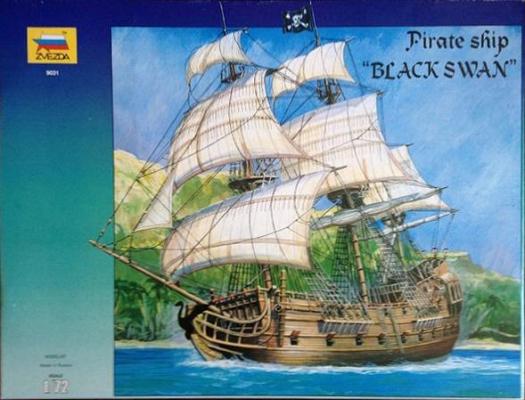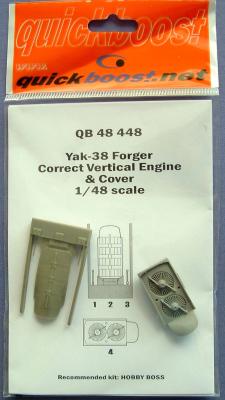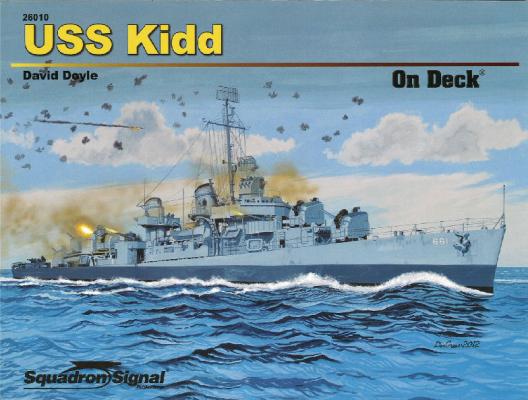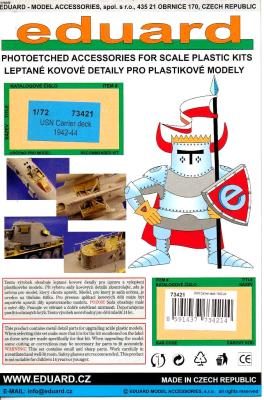Ahoy, Mates! Welcome to the first installment of Zvezda’s 1/72 Pirate Ship “Black Swan.” One of the things I love about review team duty is the chance to try subjects I wouldn’t normally build. This is one of them. In fact, this is my first attempt at building a sailing ship. I think I’ve avoided it because, like biplanes, there’s usually a lot of rigging. Just can’t imagine building models over a lifetime and never building a sailing ship, so here goes! I’m not up on all the proper terms, so I hope the pictures show what I can’t describe.
Welcome to the IPMS/USA Reviews site!
Introduction: The primary organization of the IPMS/USA Review website is by IPMS/USA National Contest Class. Within each Class there are sub-menus by kits, decals, books, etc. The Miscellaneous Class is for items that are not class specific or that cross two or more classes.
IPMS/USA Members: We encourage you to submit reviews, both here and to the Journal. To volunteer for membership in the IPMS/USA "Reviewers Corps" and submit your own reviews, please read the Guidelines For Submitting Product Reviews.
Manufacturers, publishers, and other industry members: IPMS/USA is pleased to offer your company the opportunity for product reviews. All product reviews are performed by IPMS/USA members, and are posted in the publicly-accessible section of our website. With very few exceptions, we perform full build reviews of new kit releases, aftermarket products, and supplies. If you would care to provide product samples for review, please contact John Noack, IPMS/USA 1st VP.
To learn more about IPMS/USA, please see our About Us page.
The Yak-38 Forger was the Soviet Union’s equivalent to the Harrier. Built to operate from the Kiev class Aircraft-Carrying Cruiser, the Forger provided limited air defense and anti-surface ship capability. Unlike the Harrier, which relied on a single engine to provide all of the vertical thrust, the Forger had two dedicated lift engines behind the pilot to assist with VTOL. The engines were covered with a large louvered door assembly. Whenever the aircraft was parked, this door was open and the louvers closed, as shown in the accompanying photo from a Soviet State Publication on the Navy. In flight, the door was closed and the louvers open, except during takeoff and landing when the door lifted to provide greater air flow.
Squadron has done it again. Here is another outstanding pictorial and brief narrative of one of our historical WWII ships. The USS Kidd, named after Rear Admiral Isaac Kidd, CO of the USS Arizona, is a Fletcher Class destroyer. Launched 28 February 1943 at the Federal Shipbuilding and Drydock Co., Kearny, New Jersey, she was commissioned just short of two months later, on 23 April, 1943. There were 175 Fletcher Class Destroyers produced, therefore making it the largest class of destroyers built. She first served in the Atlantic and then the Pacific. On 11 April 1945, she was stuck by a Kamikaze that killed 38 and wounded 55 of her crew. She returned to the fleet on 1 August 1945 to finish the war. USS Kidd was decommissioned and placed in the inactive reserve fleet on 10 December 1946.
Once again, Eduard steps up with an innovative photoetch accessory to add realism and context to 1/72 scale aircraft. In the tradition of their superb PE sets to go in and on aircraft kits, the growing series of prepainted PE flight deck and airfield operating surfaces adds this little beauty to its ranks.
Prepainted in natural wood flight deck color, this little gem provides a convincing and contrasting base to the blues of US Navy aircraft of the period. A few snips, and a tiny bit of filing or sanding, and the deck section is ready to mount to a firm base or slide underneath a favorite WW II Navy carrier plane. The only drawback is the small size, as larger aircraft like TBD Devastators, TBF/TBM Avengers, and SB2C Helldivers may seem to dwarf the piece – it seems better-suited for the smaller types like the F4F Wildcats, F6F Hellcats, and SBD Dauntlesses.
With the recent retirement and consignment of the Shuttle fleet to museums around the country, it is nice to see a book that is a retrospective on the program. This book is ambitious in its scope, covering the entire program from the early testing of lifting bodies to the final mission of Atlantis (STS-135) in July, 2011, in just 300 pages. It is more photographic history than narrative and, given the scale of the operation, the pictures are captivating and more than make up for the lack of text. The book is divided into seven chapters (called stages) and an appendix:















